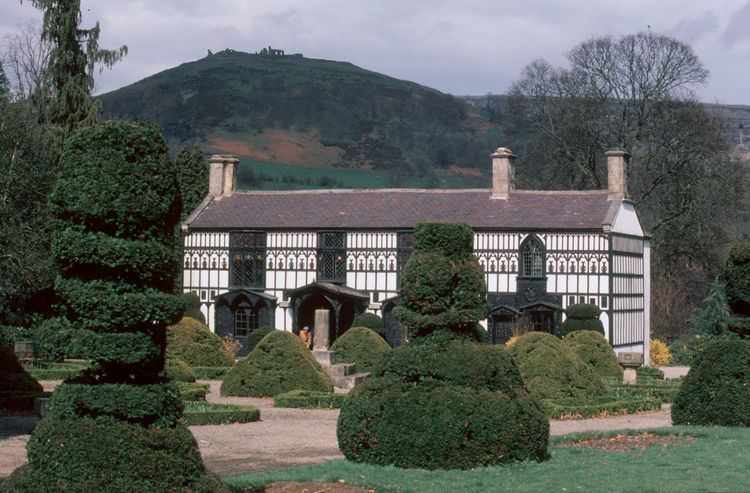Phone +44 1978 862834 | ||
 | ||
Hours Closed today TuesdayClosedWednesday10AM–5PMThursday10AM–5PMFriday10AM–5PMSaturday10AM–5PMSunday10AM–5PMMonday10AM–5PMSuggest an edit Similar Valle Crucis Abbey, Llangollen Motor Museum, Castell Dinas Brân, Berwyn railway station, Llangollen Tourist Informatio | ||
Plas newydd llangollen wales home to ladies of llangollen
Plas Newydd ( /plas no-with/) ("new hall" or "new mansion") is a historic house in the town of Llangollen, Denbighshire, Wales, and was the home of the Ladies of Llangollen, Lady Eleanor Butler and Sarah Ponsonby, for nearly 50 years. Today, it is run as a museum by Denbighshire County Council.
Contents
- Plas newydd llangollen wales home to ladies of llangollen
- History
- Architecture
- Hauntings
- In popular culture
- References
History
Plas Newydd is notable as the home where two Irish ladies, Lady Eleanor Butler and Miss Sarah Ponsonby (the Ladies of Llangollen) eloped and set up house together in the late 18th century, scandalising the world. Plas Newydd was originally a five-roomed stone cottage, but over the years it was enlarged to include many Gothic features. Although originally ostracised by their families, the Ladies and their strange lifestyle gradually became accepted, and their home was visited by many famous people including Robert Southey, William Wordsworth, Caroline Lamb and Sir Walter Scott, the Duke of Wellington and the industrialist Josiah Wedgwood.
The Ladies also expanded and improved the gardens, adding many Gothic features such as a "ruined" archway, rustic bridges over rushing torrents and a temple that included a font removed from the ruined Valle Crucis Abbey. Ornate greenhouses grew exotic fruit, and poetic notices were attached to trees.
After their deaths in 1829 and 1831, the property passed through various hands and saw a number of changes. General John Yorke added the black and white features on the exterior and filled the interior with oddities from around the world. In 1932 the house was acquired by Llangollen Urban District Council and it is now a museum.
Architecture
The original cottage was expanded by the Ladies, and then again by subsequent owners in the 19th century. It is now restored to essentially the final structure left by the Ladies. Its most unusual feature is the profusion of pieces of reclaimed oak carvings collected by the Ladies and set in patchwork style over much of the wall areas of the house. These came from broken-up furniture or church fittings, and range in date from the medieval to the Baroque, but with folk and "Jacobean" vernacular styles of shallow carved decoration predominating, as well as Gothic-style black-and-white trim and carvings. The Ladies also added much stained glass.
Hauntings
Plas Newydd is said to be haunted by the Ladies of Llangollen, and has been featured on the UK's Most Haunted. Visitors have reported seeing the ladies' apparitions in the library, their favorite room, among other rooms in the house, including their master bedroom. There have also been reports of people seeing and hearing footsteps of the spirit of an old woman walking around upstairs, and a young boy seen in the drawing room, and in the state guest bedroom, as well as a malevolent old military man who lived here in the mid-1800s after the Ladies' deaths.
In the late 1800s, a woman named Mary Gordon is said to have seen both Ladies' apparitions while visiting Plas Neywedd. On her second visit, she saw the Ladies' spirits in the library. This paranormal encounter inspired her to write about their lives in a "thinly-veiled biographical novel" entitled Chase of the Wild Goose, originally published in 1936.
However, in the past 25 years the staff at Plas Newydd have never seen any evidence of "hauntings" by the Ladies of Llangollen.
